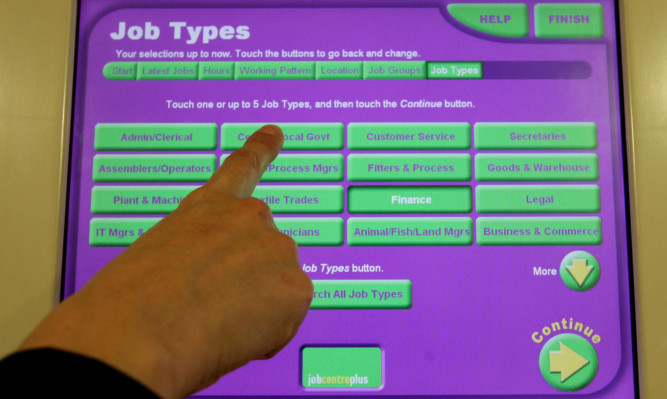The number of people finding jobs in Scotland increased again last month as the economy recovered some of the growth momentum lost in January, according to a new report.
However the rate of growth remained below the levels seen in the opening quarter of 2015 and throughout 2014, the Bank of Scotland Report on Jobs showed.
There was a continued growth in demand for staff, but a sharp contraction in the availability of candidates to fill vacancies.
Meanwhile, staff pay rewards improved, with the survey showing marked rises in both permanent starting salaries and hourly rates for temporary staff in May.
The report also showed that the Bank of Scotland labour market barometer registered above the 50.0 “no-change” mark in May, at 59.6, highlighting an overall improvement in the health of the job market north of the border.
This was slightly higher than April’s 22-month low of 59.1 and below the UK as a whole which registered at 62.
The barometer measures areas such as levels of staff demand, employment and wages to create a single-figure snapshot of labour market conditions.
Donald MacRae, chief economist at Bank of Scotland, commented: “May’s Barometer was a healthy 59.6 – slightly up from last month. The number of people placed into work rose accompanied by an increase in both permanent and temporary vacancies.
“The rate of increase in permanent starting salaries was strong while hourly pay rates for temporary staff increased for the second month in a row.
“These results show the Scottish economy recovering some of the growth momentum lost in January this year.”
The most marked increase in permanent starting salaries was recorded in Edinburgh, which also registered the second-fastest rise in temporary pay behind Dundee.
Glasgow and Edinburgh recorded the steepest declines in permanent and temporary candidate availability respectively, while Aberdeen was the only region where candidate supply rose.
The strongest rise in demand for permanent staff was in the IT and computing sector, while the strongest increases in demand for temporary staff were in IT and computing and secretarial and clerical.
Deputy First Minister John Swinney said: “We welcome today’s figures, which indicate that conditions in Scotland’s job market are continuing to improve. The Bank of Scotland report shows that demand for permanent staff is continuing to increase, while permanent starting salaries also grew strongly.
“Scotland’s labour market is performing well across a range of measures. For instance, Scotland currently has the highest employment rate and lowest inactivity rate of all four UK nations.
“This Government is committed to creating a fair and inclusive jobs market which supports all of Scotland’s businesses and people.”
ends
